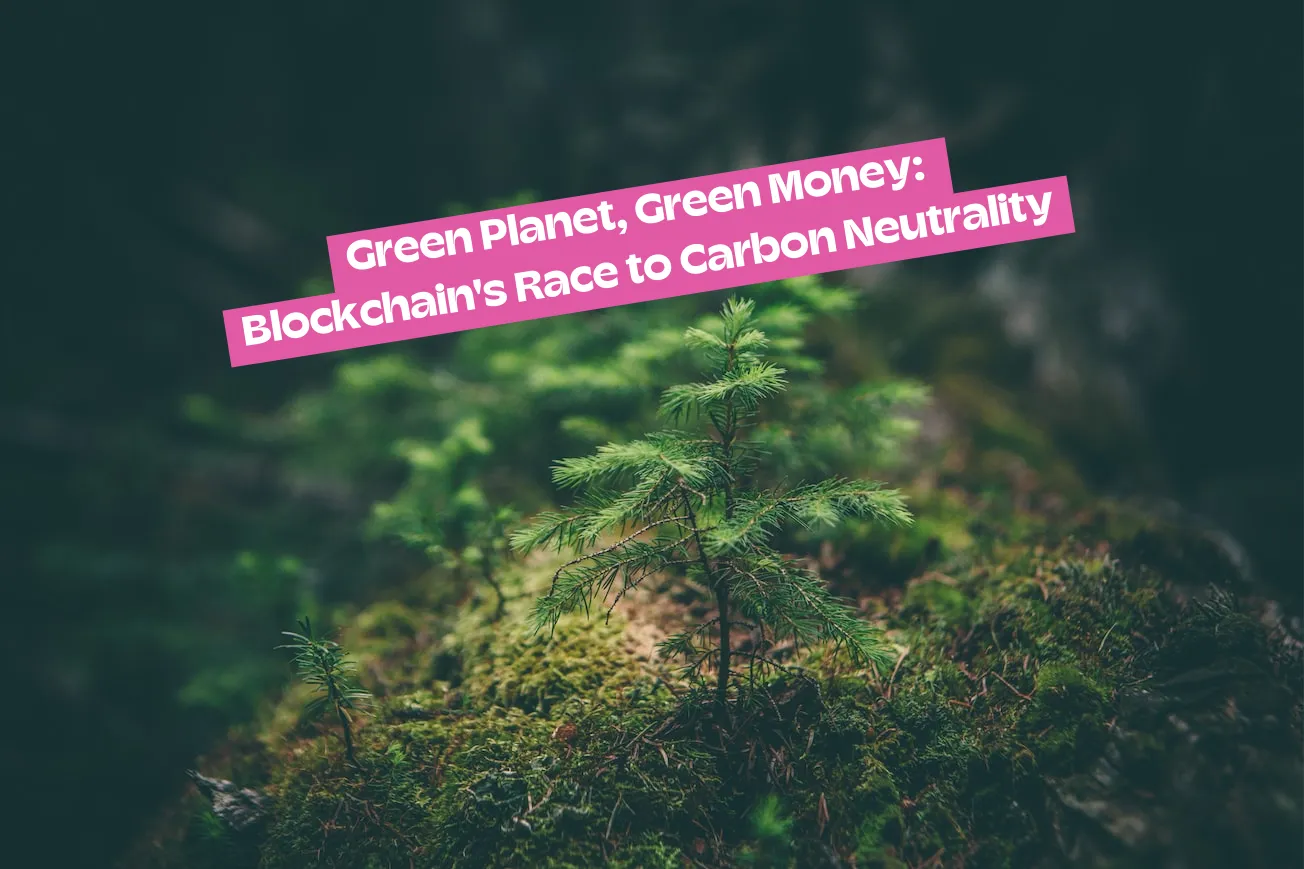Table of Contents
Like a pressure cooker about to blow, the world's climate crisis is at boiling point. Likewise, the pressure is on enterprises to take green, environmentally responsible action in their own quest for green bags.
Web3 natives have insisted that blockchain has the capability to irreversibly disrupt countless industries, but how does it fare against the mighty storm of climate change and how can investors get on board?
This article was prepared in collaboration with Franklin Templeton.
Green Targets
Global climate change requires global action. 92% of global GDP, accounting for 88% of global emissions and 85% of the world’s population have made net-zero commitments, with 2050 as the average targeted year to achieve it.
The International Civil Aviation Organization and the International Maritime Organization have targeted 2050 for international aviation to reach net zero carbon emissions and to reduce greenhouse gas emissions from international shipping by at least 50% respectively.
2050 may seem like an ambitious target but a lot can change in 27 years; just consider how far we've advanced over the last 27 years.
Green Money
As governments race to carbon neutrality, companies are inevitably seizing the opportunity to facilitate their approach. This has, in turn, opened the door to new innovation practices as well as investment opportunities.
In order to meet the objectives of the Paris Climate Agreement, a global annual investment of $3 trillion to $4 trillion is expected to be needed. Last year $1.1 trillion was invested into the sector; an increase of 31% from 2021 but one-third of the required investment needed moving forward.
ClearBridge Investments portfolio analyst Benedict Buckley explains that government commitments to net zero and technological change that reduces the cost of decarbonization solutions serve as key pillars for investment.
"There is a clear opportunity for businesses — companies that can solve decarbonization challenges will get rewarded, as there are large addressable markets for companies innovating and finding new ways to perform almost any economic activity in a way that is lower carbon," Buckley states in Franklin Templeton's report Opportunities in decarbonization disruption.
ClearBridge Investments is one of the specialist investment managers (SIM) of Franklin Templeton.
Investors looking to enter the market will immediately look towards renewables. As Buckley mentions, the cost of energy from wind and solar projects is now 50% cheaper than BloombergNEF's (BNEF) global benchmarks for new coal and gas-fired power.
According to the Levelised Cost of Energy (LCOE), solar and wind are the cheapest forms of electricity generation right now. Solar panels are dominated by Chinese suppliers but investors can look towards other components. Buckley suggests solar inverts and software for solar plants.
Storing energy is also a crucial and "less mature" sector, so firms with battery expertise would be worth considering. The success of EVs such as Tesla lies in its battery technology. OG battery veterans Panasonic and LG are now facing competition from Chinese firms CATL and BYD. Tesla is developing cylindrical battery cells that supply energy up to five times that of batteries in most current Tesla cars.
Of course, investing in EVs directly is an obvious option too, but perhaps too obvious for investors looking to take the path less travelled. Instead, Buckley suggests considering companies making connectors and components for EVs. Such firms will "benefit from the transition to EVs because they have higher electrical content per car and represent a revenue opportunity 2x larger than for a traditional car," Buckley states.
Those with insatiable risk appetites could also consider EV charging infrastructure businesses and hydrogen fuel cells, but Buckley warns that such industries have unproven business models.
Green Blockchain
To say that the evolution of fossil fuels to renewable energy is a technical feat would be an understatement. We might be reluctant to admit it but carbon-based fuel has afforded us the comfortable lifestyles we too often take for granted. Whether it's in transporting us across the world or heating our homes in the winter, our reliance on carbon energy is immeasurable.
Carbon-based fuel might be inefficient in terms of pollution but it's incredibly efficient in producing energy for us. Replicating such efficiency whilst eradicating environmental inefficiencies thereby requires an incredible amount of R&D and technological innovation.
Blockchain, which strives to iron out inefficiencies in today's structures, could contribute vastly to the solution. Firstly, blockchain can step in to improve the transparency of decarbonization mechanisms such as carbon markets. Rocky Mountain Institute (RMI) explains that the carbon credit industry is currently plagued with "poor liquidity, slow speed-to-market and transactional fiction." Tokenization is being used to tackle these issues.
"Digital tokens, whether fungible, semi-fungible, or non-fungible, make it easy to access and trade carbon credits on the blockchain," RMI states.
The notorious world of NFTs can also be tapped into for the greater good. NFT smart contracts are helping in categorizing the types of credits and steering capital flows to high-quality credits. Fractionalising these credits for wider market access can also be achieved through the NFT paradigm, allowing "ordinary consumers [to] claim ownership of the same carbon credit and create more participation and democracy in the credit marketplace."
According to the WEF, blockchain can also address environmental issues such as "biodiversity loss, disaster displacement and energy grid deficiencies, as well as resource allocation and coordination."
Decentralised ledgers can also be used to track carbon credit information, offering greater transactions for the carbon credit marketplace by verifying the identities of buyers. Carbon markets currently suffer from "double counting" in which two parties offsetting their emissions claim credit for the same action. These ledgers can eradicate this.
Green Limitations
Far too many companies are shoehorning blockchain technology into their projects. Often ill-advised or misguided at best, the industry is plagued with the remains of projects that succumbed to failure due to their over-dependence on and misuse of blockchain. Carrying a blockchain label on your project foolishly warrants a higher investment price, even today.
Aside from bad actors (SBF, Do Kwon etc), crypto's kryptonite is regulation. The entire space is held back by governments implementing stern measures to protect their citizens whilst affording them the industry has to offer. It's a tale as old as time and it's become rather tiring for investors. Both the blockchain and climate industry suffer from a lack of regulatory clarity.
The US Securities and Exchange Commission (SEC), which seems to have a Leviathan-sized axe to grind, extends its reach when it comes to blockchain climate projects too. How the regulator classes digital assets (securities or commodities) will define how investors can tokenize carbon credits.
Other concerns include blockchain's involvement in environmental innovation being untested waters. "There must be consideration of the unintended consequences, technological maturity and implementation approaches that may impact the people, communities and natural ecosystems already facing climate inaction," the WEF emphasises.
Additionally, blockchain requires a significant amount of energy to operate. Ethereum maxis will school you about how the Ethereum Merge was crucial in reducing energy waste but the industry still has a long way to go. Using high amounts of energy to combat an energy crisis could be counterintuitive.
However, as mentioned, governments have pressured themselves to achieve carbon-neutral goals by 2050. Companies that accelerate the process will more likely be met with grants and gratitude rather than cynicism and lawsuits.
The industry itself has further challenges too. Renewable energy requires materials including copper, lithium, nickel and cobalt. Achieving the 2050 net-zero goal would require up to six times more use of these minerals, which could result in its own environmental risk. Minerals could also make for a smart investment, nonetheless.
Geopolitical friction also serves as a roadblock for the industry as well as blockchain. Whilst the world can agree that action needs to be taken to protect our planet, countries are not so amicable in sharing resources, cooperation, standards and trade barriers. Even utilizing blockchain across borders will prove to be a contentious issue for unfriendly states.
To read more about investing in climate action, click here.









